Egging on vital research
Frogs help scientists tackle human disease
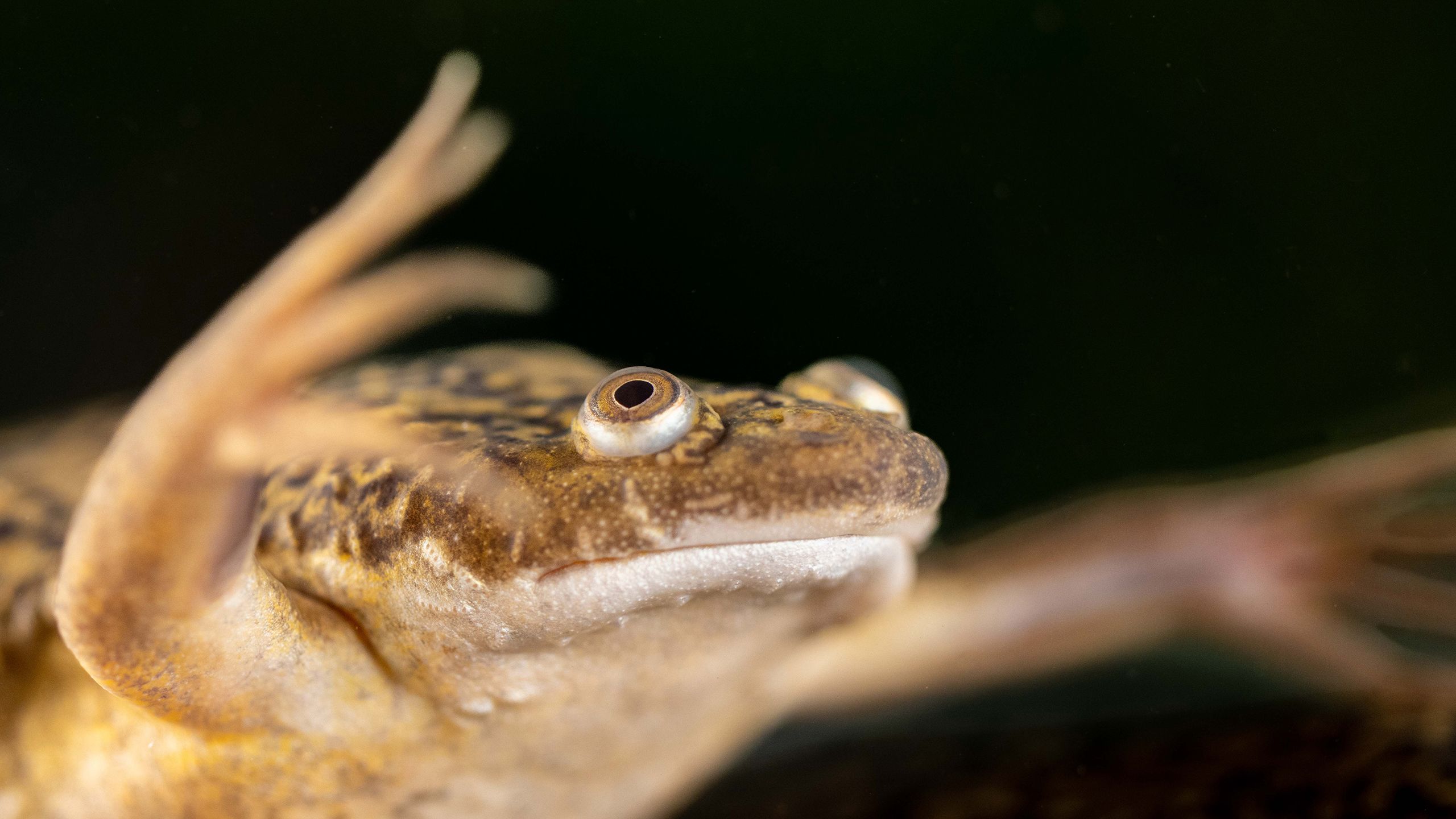
This is an African Clawed Frog, or Xenopus laevis, one of the most studied of all amphibians.
Its basic biology is surprisingly similar to humans.
A female Xenopus can produce up to 30,000 eggs in her lifetime. The eggs are large and filled with a complex substance called cytoplasm, which researchers are using in an unusual way.
Wellcome Trust Senior Research Fellow Dr Jenny Gallop is studying the actin cytoskeleton, a system of long filaments that are vital in embryonic development - and frogs play a key role.
Gallop wants to understand how the actin cytoskeleton is involved in changing the shape of cells and moving them around as an embryo develops into a fully-formed organism.
For example, in brain development our growing nerve cells must navigate to very precise locations and make the right connections: somehow the actin cytoskeleton can specifically orchestrate the process.
“The actin cytoskeleton is in all the cells of our body. It’s important in pumping our heart, supporting our immune system, it’s everywhere. So it’s been very difficult to translate an understanding of it into a drug to treat any specific problem,” says Gallop, who leads a research team at Cambridge's Gurdon Institute and is also an Associate Professor in Cambridge's Department of Biochemistry.

Dr Jenny Gallop. Photo: The Gurdon Institute.
Dr Jenny Gallop. Photo: The Gurdon Institute.
“What intrigues me is that cells use the actin cytoskeleton in specific ways to achieve specific goals – it has to be orchestrated and controlled. How does this work?”
“It’s like there’s a programme running. If we can understand it, we might be able to fix specific mechanisms when they go wrong to cause disease,” says Gallop.
Gallop has created a simpler version of the actin cytoskeleton system that she can study in the lab outside of cells and living bodies.
A key component is the cytoplasm extracted from frog eggs.
“Using frog egg extract allows us to get actin cytoskeleton outside the cell and take a simplified approach to figuring out how it assembles at a molecular level,” says Gallop.
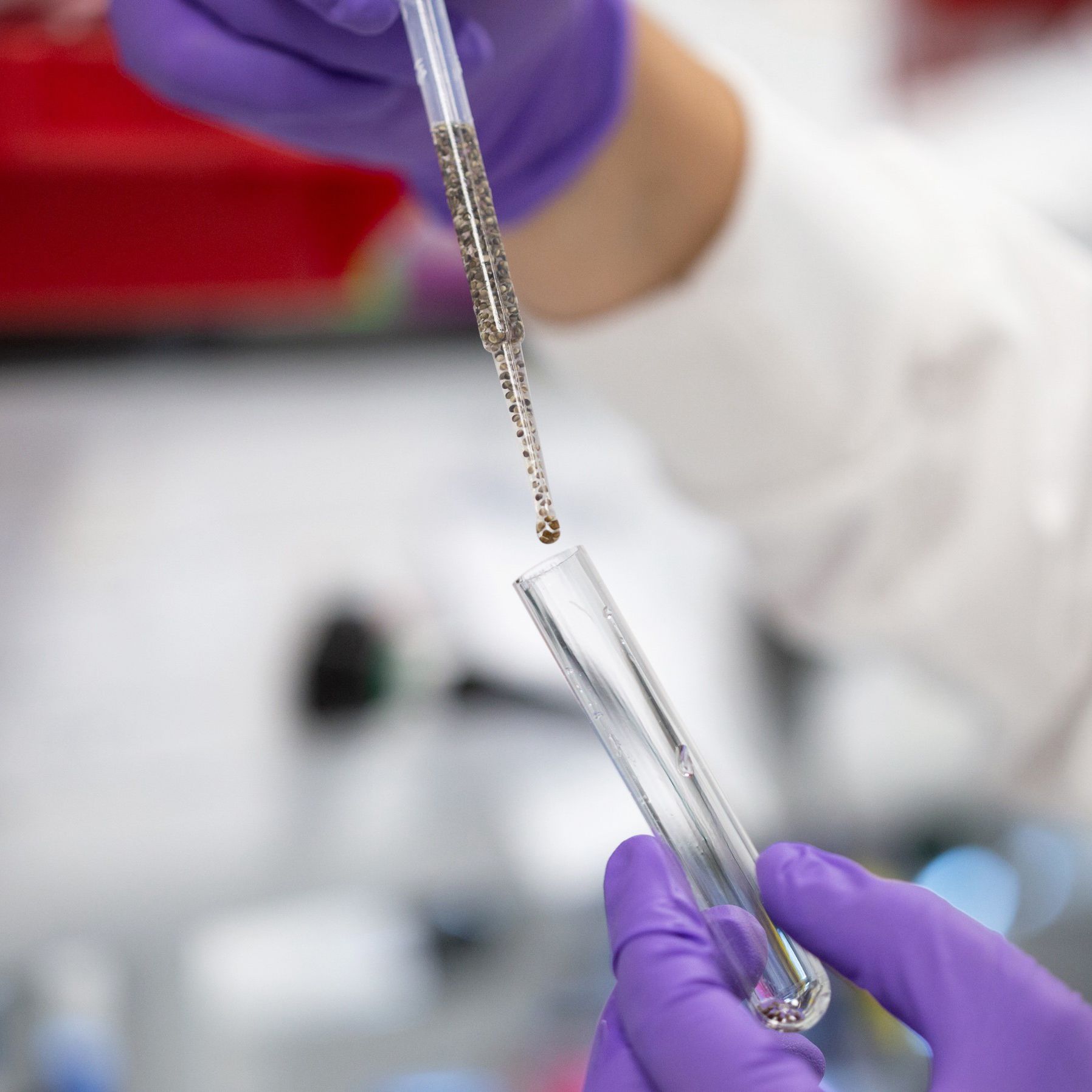
Xenopus frog eggs are 1mm in diameter so can be seen by the naked eye. Photo: The Gurdon Institute.
Xenopus frog eggs are 1mm in diameter so can be seen by the naked eye. Photo: The Gurdon Institute.
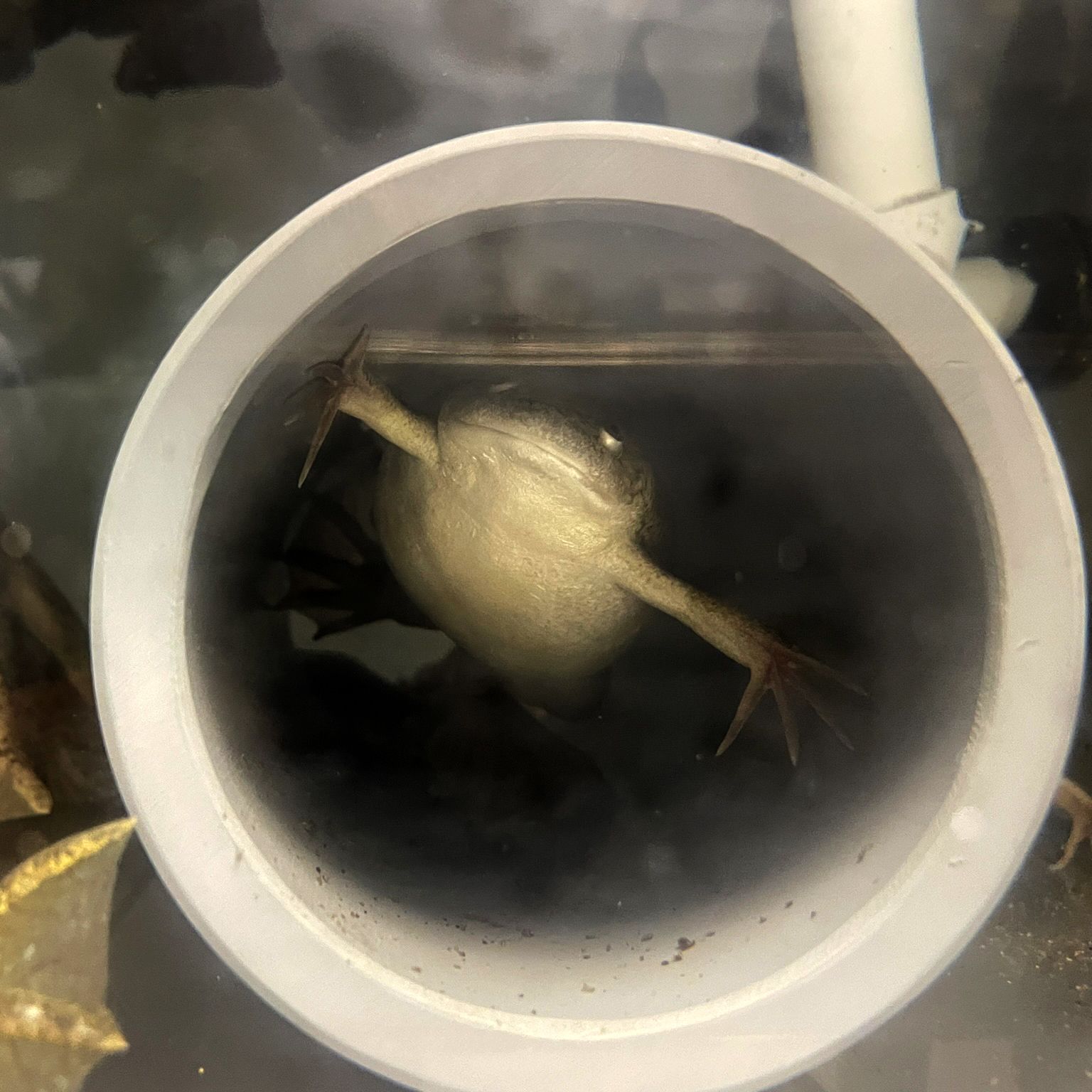
Smooth tubes provides places for the frogs to hide: their natural environment is muddy ponds. Photo: Jacqueline Garget.
Smooth tubes provides places for the frogs to hide: their natural environment is muddy ponds. Photo: Jacqueline Garget.
The work needs a lot of frog eggs: around 2,000 per week.
Gallop’s lab keeps around 120 female frogs that are induced to lay eggs in a way that matches their natural cycles. This requires a hormone injection - just a mild discomfort to the frogs - every three to four months to make them ovulate. Over time, Gallop has refined her methods so that only half the original number of frogs are now needed.
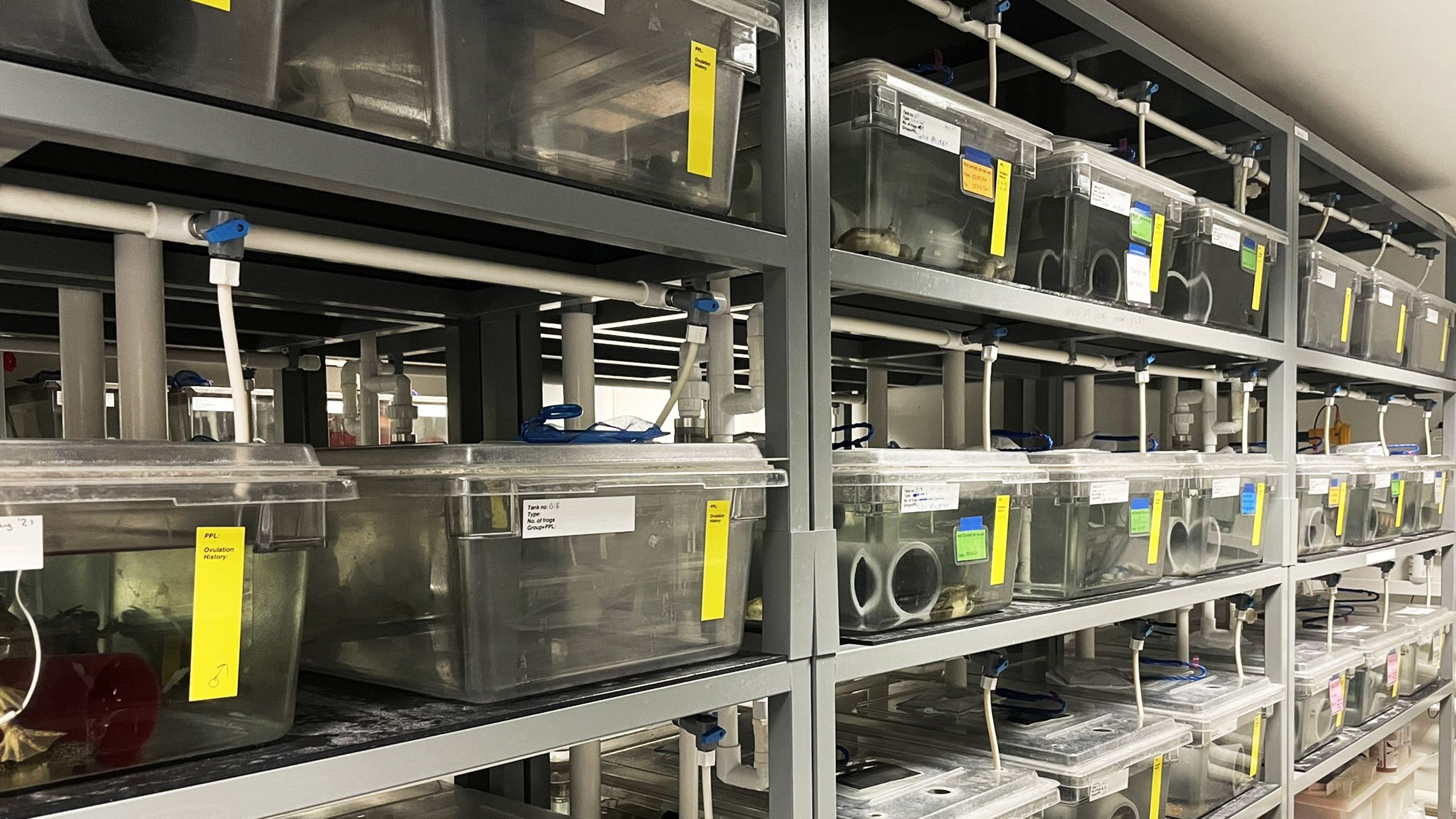
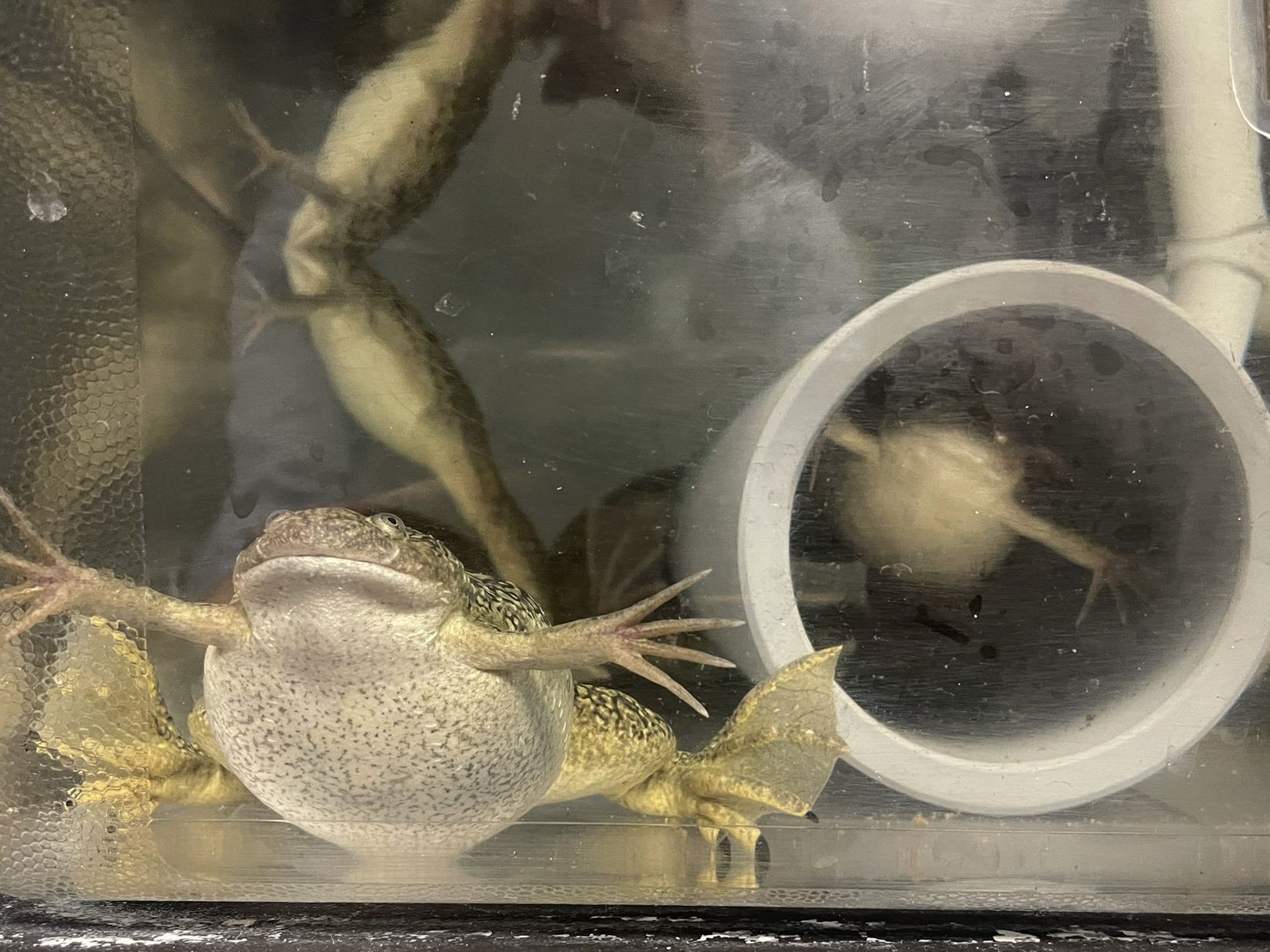
Problems with control of the actin cytoskeleton have been linked to the kidney problems experienced by patients with two rare conditions called Lowe syndrome and Dent disease 2. Patients with these conditions carry similar genetic mutations, but experience different symptoms - scientists aren’t sure why yet. Common to both conditions is impairment of kidney function, which usually progresses to kidney failure in mid-life.
When Gallop worked out that specific lipid molecules in cell membranes are important in controlling the actin cytoskeleton, she realised that there was a link with Lowe syndrome and Dent disease 2, which causes alterations to these lipids.
Could the finding be used to help people with these diseases?
“Our simplified system using frog egg extract was vital in making the connection to what might be going wrong in Lowe syndrome and Dent disease 2."
“And excitingly, we realised there’s an existing drug that might be able to help tackle this. In the best scenario it might slow the progression to kidney failure,” says Gallop.
Her experiments became the first in a chain of steps to test whether an existing drug called alpelisib might fix the lipid problem: next were model kidney cells, then mice. Working together with Professor Olivier Devuyst at the University of Zurich, Gallop’s team found alpelisib did indeed seem to work to rebalance the actin cytoskeleton control system and improve kidney function in lab models of the diseases.
- Lowe syndrome and Dent disease 2 are both caused by mutations in a gene that controls lipids in cell membranes.
- They cause kidney problems that progress to end stage kidney disease between the age of 30 and 50.
- Lowe syndrome is more severe and can also affect many other body systems causing congenital cataracts, glaucoma, low muscle tone, anxiety, seizures, and intellectual disability.
- Both conditions are rare, occurring in around 1 in 500,000 people.
The work has led the team to meet patient groups and learn more about the impact these diseases have on real people.
The Gurdon Institute’s Public Engagement Manager, Hélène Doerflinger, led a collaboration with the Lowe Syndrome Association and researchers in the Gallop Laboratory to create a series of short films about the condition.
Families, researchers, and patient advocacy groups all have important perspectives – and the latter has now provided funding to accelerate Gallop’s research towards clinical use.
What is Lowe Syndrome?
What is it like caring for a loved one with a rare genetic condition?
What does it mean to study a rare genetic condition in the lab?
How are patient advocacy groups providing support?
“There are real people whose lives will be affected by what we’re doing in the lab, and our conversations with them are really important,” says Gallop.
“It’s been very inspiring to know that even though we're working on the very basic biological mechanisms, it’s ultimately for the benefit of wider society.”
Alpelisib has already been approved to safely treat breast cancer in humans, and Gallop is now applying for approval to test whether it works to treat the kidney problems in patients with Dent disease 2 - in collaboration with clinicians Dr Barbara Ruggiero and Dr Francesco Emma at the Bambino Gesù Hospital in Italy.
Repurposing an existing drug means the long drug-development process has already been done. Conversations with people affected by the diseases inspire Gallop’s team to keep going.
And the frogs have played a vital role in this decade-long journey.
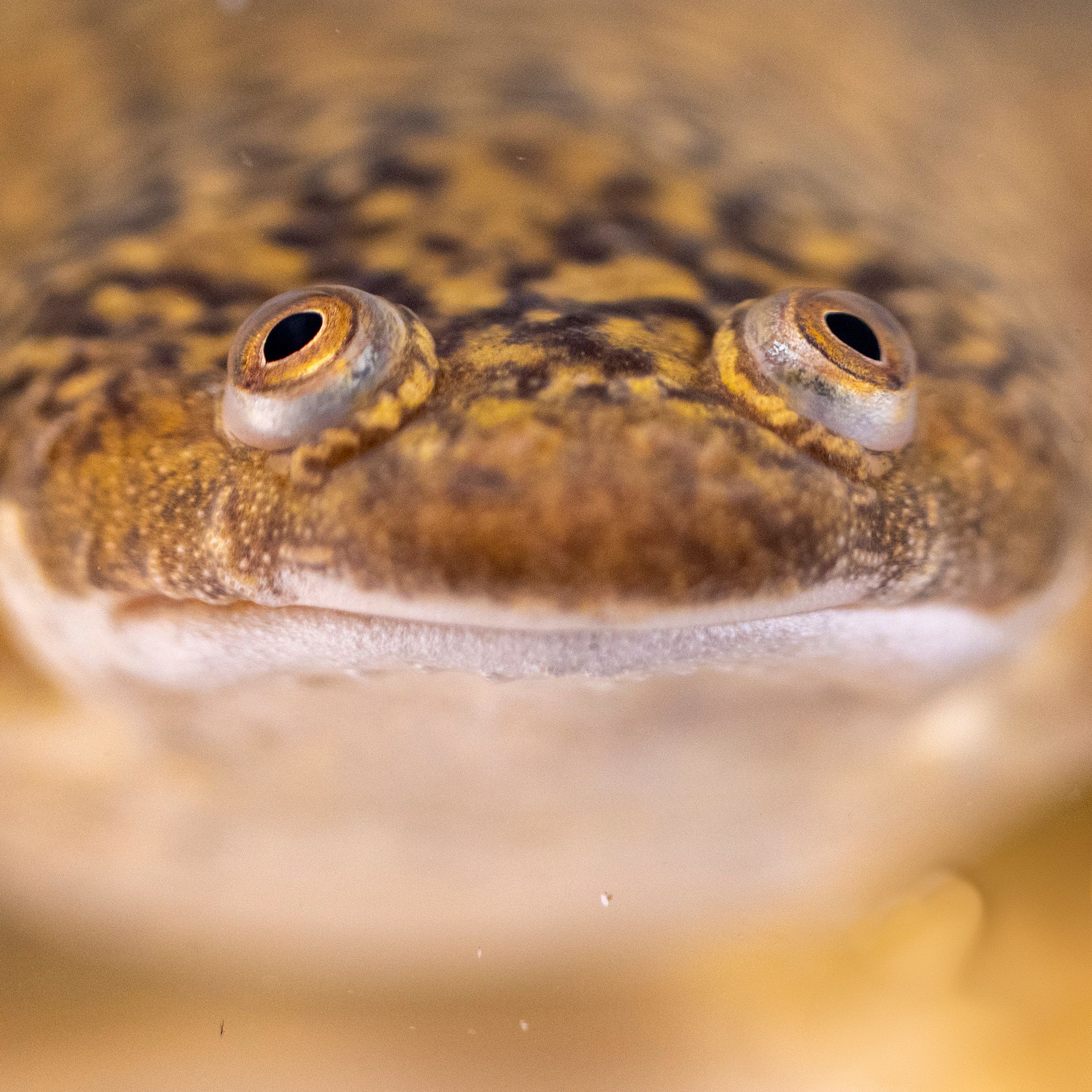
Adult African Clawed Frog. Photo: Xenbase.
Adult African Clawed Frog. Photo: Xenbase.
Gallop has also started investigating other symptoms of these rare diseases too, which centre on the brain and nervous system, and that means going back to the frogs.
“This really is the best I could have hoped for, it’s been an amazing journey so far,” she says, adding:
“Working in a lab is difficult and you can sometimes feel very isolated. But now we’ve met patients and their families, who keep going in such difficult situations, we’ve got the extra motivation to carry on.”
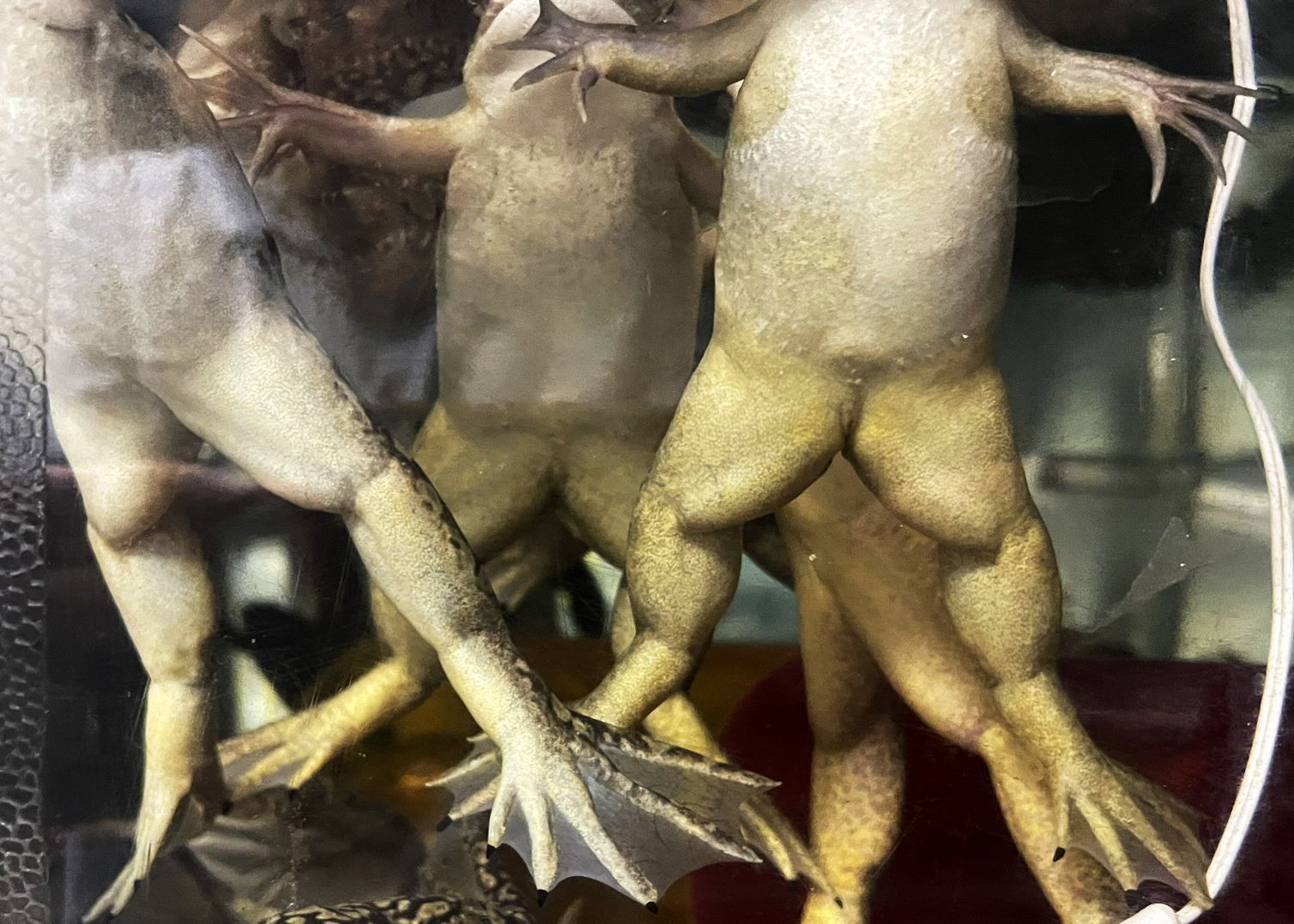
Published 11 July 2024
More information: https://gallop.group
Top photograph of Adult African Clawed Frog: Xenbase. Background photographs of frogs and tanks: Jacqueline Garget.
The text in this work is licensed under a Creative Commons Attribution-NonCommercial-ShareAlike 4.0 International License